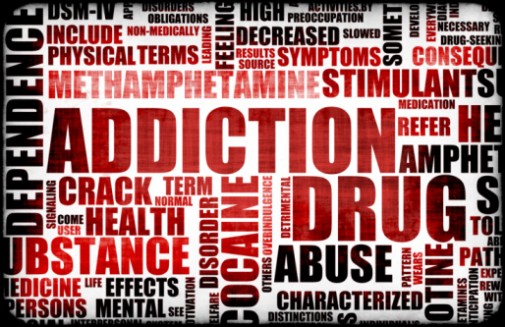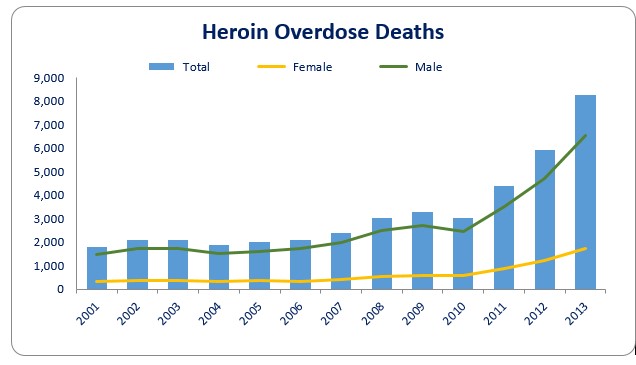Heroin on the rise among women, young adults

While heroin is not the most abused drug in the United States, it has become a growing problem. There was a 286 percent increase in heroin addiction and overdose deaths from 2002 to 2013. Heroin use has also more than doubled among women and young adults ages 18 to 25, according to a recent report by the Centers for Disease Control and Prevention.
“In this study, the strongest risk factor for heroin abuse or dependence was abuse or dependence on opioid painkillers,” said Dr. Debra Houry, director of the National Center for Injury Prevention and Control. “To respond to this epidemic, we have to do two things — ensure appropriate prescribing and use of opioid painkillers to keep at-risk people from starting heroin and expand treatment and recovery for those already abusing or dependent on opioid painkillers or heroin. States are critical to both of these efforts.”
Opiates are a group of drugs used to treat pain. They come from opium which is derived from pods of a poppy flower. One such drug is morphine, which is processed to make heroin. In heroin’s purest form, it’s a white powder. It also comes in a brown or black sticky substance. The color is darker because additives have been put in.
“Despite the worsening situation with heroin, there are still measures we can take to prevent and reduce addiction,” says Dr. Lara Segalite, an addiction specialist at Advocate Lutheran General Hospital in Park Ridge, Ill. “First we need to make sure that opioid prescribing practices are monitored and only prescribed when necessary. Secondly, we need to make sure that if someone is addicted to heroin that they receive the proper education, resources and treatment.”
According to Dr. Segalite, some signs of heroin use are:
- Loss of menstrual cycle
- Needle track marks visible on the arms
- Burned silver spoons
- Missing shoelaces (used for tourniquets)
- Needles not used for medical purposes
“If you identify any of these signs, you should make sure the individual reaches out for the proper help,” she says.
Anyone seeking help can contact Advocate’s Addiction Treatment Program or visit the National Institute on Drug Abuse website.
Related Posts
Comments
One Comment
About the Author
health enews staff is a group of experienced writers from our Advocate Health Care and Aurora Health Care sites, which also includes freelance or intern writers.



















Angeline Maciorowski wrote, “It also comes in a brown or black sticky substance. The color is darker because additives have been put in.”
I don’t think so. The color is darker because the raw product has not been refined as much. Some of the natural impurities were not removed.